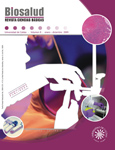Authors
Abstract
The measurement of blood amino acids is a basic test for the detection of inherited inborn errors related to some amino acids metabolism and organic acidurias. The objective of the present study was to establish reference values for amino acids in blood of canines using tandem mass spectrometry. Blood samples from 60 normal canines over 18 moths of age (30 male and 30 female) were obtained, and dried blood spots were prepared for amino acids analysis by tandem mass spectrometry. No significant differences between sexes were found. Reference values for amino acids in canines using this technique are provided. Tandem mass spectrometry is an important tool for the diagnosis of metabolic disorders.
Keywords
References
Lahjouji, K.; Mitchell, G.A.; Qureshi, I.A. Carnitine transport by organic cation transporters and systemic carnitine deficiency. Molecular Genetics and Metabolism 2001;73:287-297.
Clague, A.; Thomas, A. Neonatal biochemical screening for disease. Clinica Chimica Acta 2002;315:99-110.
Millington, D.S.; Chace, D.H.; Hillman, S.L. et al. Diagnosis of metabolic disease. In: Matsuo, T.; Caprioli, R.M.; Gross, M.L. et al., eds. Biological mass spectrometry: present and future. New York: Wiley; 1994. pp. 559-579.
Vreken, P.; Van Lint, A.E.M.; Bootsma, A.H. et al. Quantitative plasma acylcarnitine analysis using electrospray tandem mass spectrometry for the diagnosis of organic acidaemias and fatty acid oxidation defects. Journal of Inherited Metabolic Disease 1999;22(3):302-306.
Winter, S.C.; Linn, L.S.; Helton, E. Plasma carnitine concentrations in pregnancy, cord blood, and neonates and children. Clinica Chimica Acta 1995;243:87-93.
Stanley, C.A. New genetic defects in mitochondrial fatty acid oxidation and carnitine deficiency. Advances in Pediatrics 1987;34:59-88.
Bartlett, K.; Pourfarzam, M. Defects of β-oxidation including carnitine deficiency. International Review of Neurobiology 2002;53:469-505.
Bartlett, K.; Eaton, S. Mitochondrial β-oxidation. European Journal of Biochemistry 2004;271:462-469.
Osorio, J.H.; Uribe-Velásquez, L.F.; Giraldo, C.E. Perfil de acilcarnitinas en caninos mediante el uso de espectrometría de masas en tándem. Revista Colombiana de Ciencias Pecuarias 2005;18:376.
De Sousa, C.; English, N.R.; Stacey, T.E. et al. Measurements of L-carnitine and acylcarnitines in body fluids and tissues in children and in adults. Clinica Chimica Acta 1990;187:317-328.
Meyburg, J.; Schulze, A.; Kohlmueller, D. et al. Postnatal changes in neonatal acylcarnitine profile. Pediatric Research 2001;49(1):125-129.
Novak, M.; Monkus, E.F.; Chung, D. et al. Carnitine in perinatal metabolism of lipids I. Relationship between maternal and fetal plasma levels of carnitine and acylcarnitines. Pediatrics 1981;67(1):95-100.
Chace, D.H.; Millington, D.S.; Terada, N. et al. Rapid diagnosis of phenylketonuria by quantitative analysis for phenylalanine and tyrosine in neonatal blood spots by tandem mass spectrometry. Clinical Chemistry 1993;39:66-71.
Chace, D.H.; Sherwin, J.E.; Hillman, S.L. et al. Use of phenylalanine-to-tyrosine ratio determined by tandem mass spectrometry to improve newborn screening for phenylketonuria of early discharge specimens collected in the first 24 h. Clinical Chemistry 1998;44:2405-2409.

 PDF (Español)
PDF (Español)
 FLIP
FLIP














